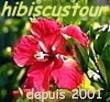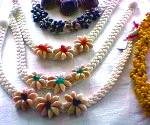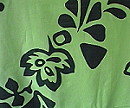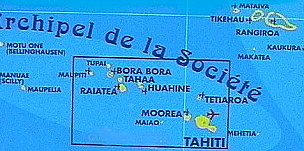-

"hibiscustour", three separate sites -
Islands and lagoons New Caledonia, Polynesia (part). -

Curiosity. Things, amazing, science, society.. -

Ideas perso. Household, Practical life, D.I.Y, Computering..
 
but reality |
  |





|
|
|
|
|
Polynesian dances are not only "tamure". They are still very traditional and demanding in the gesture.
They express the life works (fishing, harvest), festivals (weddings), death, disasters and famines (cyclones), sadness of the departures.
But we see only a marvellous entertainment there.

see "necklaces of polynesia" |
|

Tahiti is discovered in 1767 by Samuel Wallis. In 1842, "the islands" pass under French protectorate and a statute of interns autonomy is granted to them, with a Government, a President, a territorial assembly. |

Since early 2004, the autonomy of the territory has widened and it is now an "Overseas Country" (was an Overseas Territry "T.O.M"). Beyond words, it is a new step toward a sort of independance, the France being still influent and keeping some territorials rights. |
 The oil of
"monoi"
seems to be beneficial to this charming person.
The oil of
"monoi"
seems to be beneficial to this charming person.
But there is monoi and monoi :
|
|
|
|
|
"Their hierarchical society rules with taboos is fascinating, with its ritual, its human sacrifices, its fishing community where one beats
the sea with stones to drive out the fish towards the bow nets, its wild tribales wars, its percussions, dances and
banquets which last all a week long". Magazine Geo January 2003.
The Polynesian culture finds its unit in the habitat, the food practices, the dugouts with double hull and with beam, navigation, fishing, the flowers and shells assembled, the festivals and dances, the legends and the gods. The Polynesian culture developed itself according to a diagram now generally acknowledged; see " French Oceania.. |
Dancer of the "Tiki Village", Moorea. 
A long time prohibited by our religions, traditional tattooing is back in Polynesia, where it is linked with the initiatory life of the man. Some are satisfied tattooing shoulders and buttocks whereas others do not exclude any part of the body. It is practised with a needle soaked (now) in Indian ink which penetrates under the skin ; it is very painful, especially when surfaces covered are important. One mechanizes with an arranged shaver, but traditionally, it was a point of bamboo struck with small blows which made penetrate ink, or rather a natural dye, under the skin. Its renewal interest does not impose it and lots of Polynesians are not tattooed. |
Tattooing represents elements of nature, ground, mountains, flora or animals marine (teeth of shark) cardinal points or geometrical figures...
the usage of certain symbols is however delicate because it can be crowned or taboos (tortoise, shark). This is why one see more commonly
geometrical drawings. Tattooing also distinguishes the clans between them or the social standing.
It can mark the passing to the life of adult or any other stage of the life or simply meet a need for esthetics.
In the Marchionesses, one scraped tattooings on the body of dead to restore original nudity to them. The hurdy-gurdies women were in charge of this work which they carried out using shells broken to make them best cutting. (magazine GEO N° 287 January, 2003). |
|
Community, solidarity (clans, tribes go hand in hand) The needs for the community precede in front of the personal interest because only this system could allow surviving in an environment which was not always if spendthrift that it is thought. With time and " progress ", these obligations lose little by little their base. However, the community remains very "welded" (for example, one of them said to me that the Maffia had tried to settle : "We put contracts on them and they did not return". |
Children
The model was advanced until the education of the children who were or are still sometimes "given" by their parents and brought up by others parents, persons or even the community. Given but not abandoned; this aspect often made think by Europeans that the children went and came and were yielded without concern; it is still a prejudice because the child on the contrary is very protected and always at the community care. The model is blown the more so as the way of life is deeply modified and that the children themselves want to live with their parents, even if the parents make a lot when they are babies but have very little contact afterwards. Is it an Asian point of view there found, or societies marks where the kid must assume himself very quickly by the necessity ? See Polynesia 2 |
|
volcanoes (lefts), lagoons, motus (islets) atolls. The Polynesia umbrella 20% of the world atolls lagoons in the world. The largest lagoons correspond to the smallest remnants of volcanoes, until their complete disappearance when These volcanoes have no more magma below for long (hot point), and they slowly sink with the ocean plate moving forward. The lagoons and reefs were first ignored, mainly representing a real danger for sailors when at the time of Pierre Loti, it took three months to reach them form Europe. The sea and swimming being not yet in vogue, "they turned instead back to the sea." Today, major hotels are only opened over the lagoons, creating or recreating this rather artificial paradise expected by tourists, well shelled from the real problems of the country, slums and industrial areas of Papeete. The photo below shows the case of Raiatea and its double islandl and its lagoon, seen here between both sides, with an island (motu) in front. Morea (*) is now the refuge island of Tahiti that no longer offer what they expect from. And they are primarily indigenous with their limited resources which are the first victims. This is unfortunate because although without real beautiful nearby beaches, Tahiti is interesting in many ways, the variety and richness of its coastline, its fabulous mountains, its rivers, its baths, its cascadess. Tahiti Iti, the small peninsula at the tip, is still partially preserved, without roads. (*) I quote : "with its sublime beaches, waterfalls, rivers, Morea looks like a garden preserved for a time." But many people seem to want to go there.. for Papeete and all its services, is just a few steps. The government is aware of the risks. |

|
See next page
good branches of driftwood, gives access to the door, opened, which is topped by a traditional decor of shells. Luxurious and inaccessible to ordinary mortals. View all directions with unforgetable Morea as background. Photo and translation Polynesian received from George (April 2008). |
|
Decimated after their contact with Europeans (diseases, abandonment of the "tabu" which protected them sometimes), the population went up little by little (219.000 inhabitants in 1996) and increase regularly, which poses new social problems (unemployment, minor delinquency). The Polynesians are in a majority with more than 60 %, come then the half-breed, Europeans (Popa' a), Asian 5 % only but who own in Tahiti 85 % of the goods (grounds, buildings.) according to the statement of our Tahitien. The Polynesians are in a majority with more than 63 % of Ma' ohi pure and 20 % of mongrel; then 12% come from Europeans (Popa' a) and only 5 % the Asian ones (Tinitos) but who have in Tahiti 85 % of the goods (grounds, buildings.) according to the statement of our Tahitien. They "were introduced" by the French to reinforce the labour, like that was practised in the Fiji by the English (introduction of Indians). The islands enchanteresses of the Pacific, described like the Paradise by Bougainville (time of the "good" savage of JJ Rousseau), offered landscapes of dream, with inhabitants generally very accessible magnet to organize festivals. They were so in addition to the exotic products which one could draw, the place of an incredible interbreeding Japan and Russia included. See in Oceania complement, it is the life and tribes. |
Raiatea is the most populated and has the largest lagoon of the archipelago of "îles de la Société" (Leeward Society), although Bora Bora also has a beautiful
lagoon, broadest, though very sandy due to its venerable 3 million years (impressive, but in fact, very recent in geological terms).
Raiatea is a water sports center.
For the Polynesians, Raiatea is known as sacred (due to the God Hiro). Huahiné, said more authentic, would be with Raiatea among the first islands of settlement of people coming from the west (Malaysia), from where they would have conquered the remainder of the Pacific. Another sources (European) locate this point in the Marquesas islands, although it is very far away from the origin stream. Both were preserved until now, but the first large hotels with bungalows on pile were installed on both islands in 2003. Bill Gate bought some bungalows in Tahaa (Raiatea) .. See also Oceania, that's the life and tribes |

|